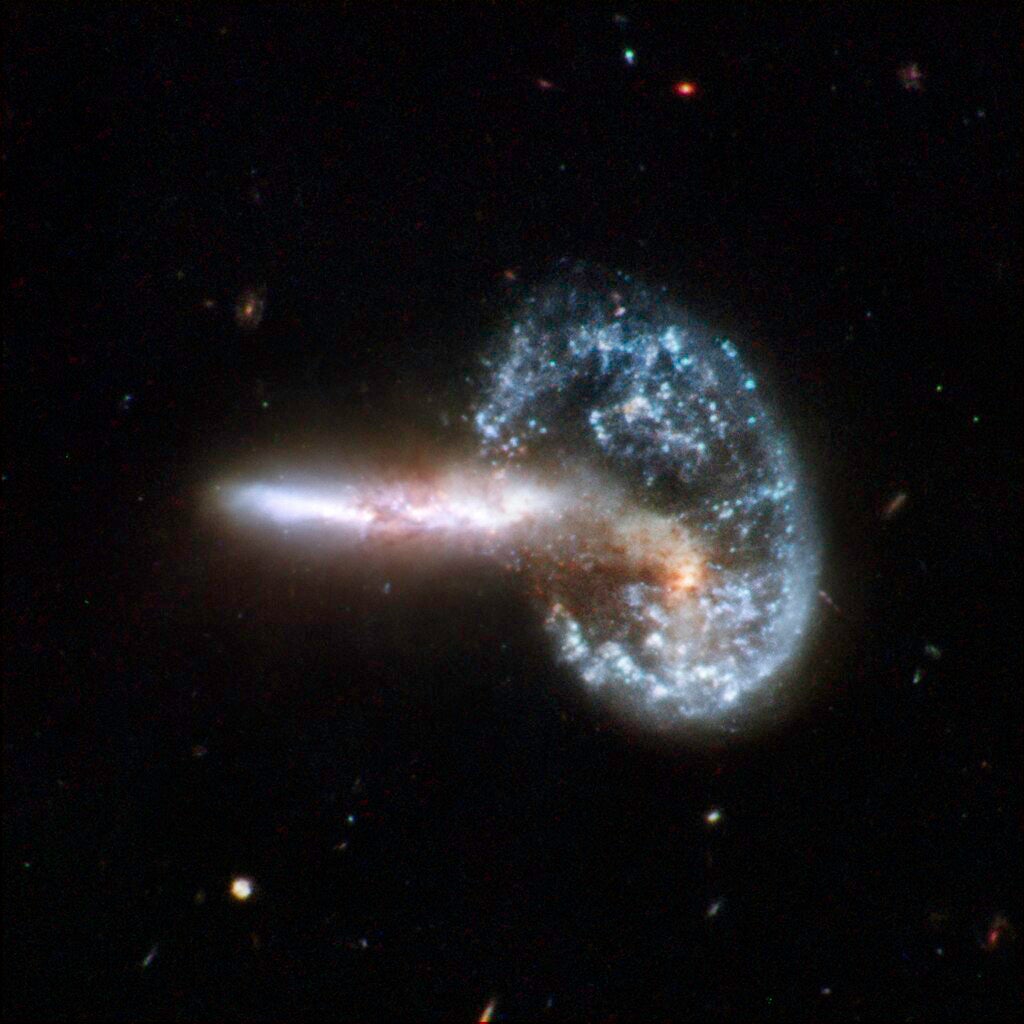
Mayall’s Object — found by American astronomer Nicholas Mayall at Lick Observatory in March 1940 — is a strange-looking sight indeed. Cataloged more formally in the Morphological Galaxy Catalog as MCG +7–23–19 and in the Atlas of Peculiar Galaxies as Arp 148, the object resembles a question mark. That shape likely epitomized Mayall’s confusion as well. Was it a nebula within the Milky Way, or did it lie beyond? That question remained unanswered for decades.
Technological improvements finally allowed later studies to prove that Mayall’s Object was actually the carnage left over after two galaxies collided 450 million light-years away in Ursa Major. As one pierced the other, the aftershock was so intense that both progenitors were structurally disrupted beyond recognition. Stars and interstellar matter were first pulled into the center of the pierced galaxy. But then in an action/reaction effect, everything expanded away to form a ring.
The centralized extension protruding on one side is the remains of the galaxy that did the piercing — almost like a game of space darts. The gas and dust in the target galaxy have been pushed outward in surges to form the outer rim, triggering new star formation along the way. The result is the slow formation of a rarely seen ring galaxy.
Look closer and you will see a small yellow feature inside the ring to the lower right of the tail end of the “dart” galaxy, probably the only remains of the target’s nucleus.









